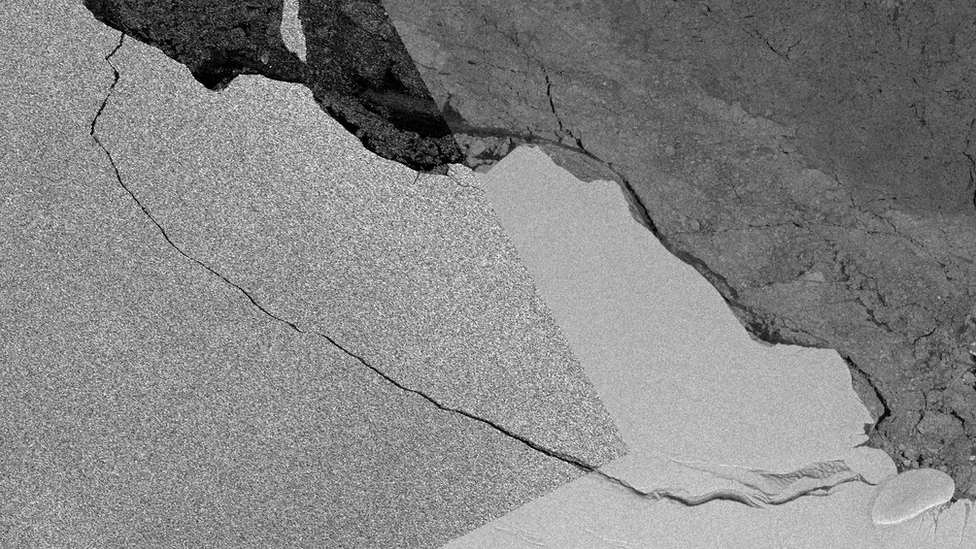Larsen ice shelf: Mission to explore uncovered Antarctic ecosystem
- Published
Watch how A-68 has moved in the months since breaking off the Larsen C Ice Shelf
Scientists leave this week to try to reach the part of Antarctica uncovered by the world's biggest iceberg, A-68.
The 5,800 sq km frozen slab broke away from the continent in 2017, exposing ocean floor that had been covered for at least 120,000 years.
A German-led expedition wants to see what's living in this opened ecosystem.
The researchers will need luck on their side, however. The region they are targeting in the Weddell Sea is notorious for thick sea-ice.
This could prevent their ship, RV Polarstern, from getting anywhere near their desired destination.
But if the team succeeds, it could catalogue a bounty of novel specimens, says Dr Huw Griffiths from the British Antarctic Survey, external (BAS).
"We've been studying Antarctica for a long time now, but even in areas we think we know pretty well - about 10% of what I find at the bottom of the sea is new to science. So, I'm expecting that in an area that no-one's ever been to before - for that number to be much higher, and for there to be a wider variety of new species," he told BBC News.
Huw Griffiths: "About 10% of what I find at the bottom of the sea is new to science"
A-68 broke from the Larsen C Ice Shelf - an amalgam of glacier fronts that have flowed off the Antarctic Peninsula and lifted up to form a floating platform.
Species that persist under such shelves must do so in the absence of light. Survival means eating other organisms or scavenging the detritus that happens to drift under the platform on currents.
Polarstern's biologists are expecting to find new types of worms, sea stars, brittle stars, sea-pigs and other sea cucumbers - the sorts of animals that will sift seafloor muds for a meal. But crustaceans, such as isopods and amphipods, will no doubt have found their niche as well.

Likely finds include new types of seapigs and other sea cucumbers
The clock is ticking, though. A-68's drift northwards may have created the scientists' opportunity, but it has given licence to other organisms from the wider Weddell sea to begin an invasion. The exposed bed will not be a unique ecosystem for much longer.
"These ice shelves are all around Antarctica, and this is our chance to get in there and study where a large segment of Larsen once was - before its sea-floor changes. It's a wonderful opportunity to understand how the marine biology works around the continent," said Dr Griffiths.

Some forms of crustaceans would also be expected
In addition to the biology, the Polarstern will be studying the Larsen C Ice Shelf itself, mapping the bed topography and taking sediment samples to understand the structure's past history.
Last year, BAS led the attempt to reach A-68's calving point - but was beating back back by the sea-ice. This year, the Alfred Wegener Institute (AWI), external is hoping to be favoured by more benign conditions.
"The expedition to Larsen C is an unprecedented opportunity to conduct international and interdisciplinary scientific research in this climate-sensitive region. Now is the time to address fundamental questions about polar continental ice shelves under climate change," said AWI cruise leader, Dr Boris Dorschel.
"Larsen C is a long way south and even in these times of record lows in Antarctic sea-ice, there's lots of sea-ice in our study area. But this is important science, so we will try our best to get there to unlock the secrets of Larsen C and A-68, supported by high-definition satellite data and the option of surveying the sea-ice by Polarstern's helicopters."
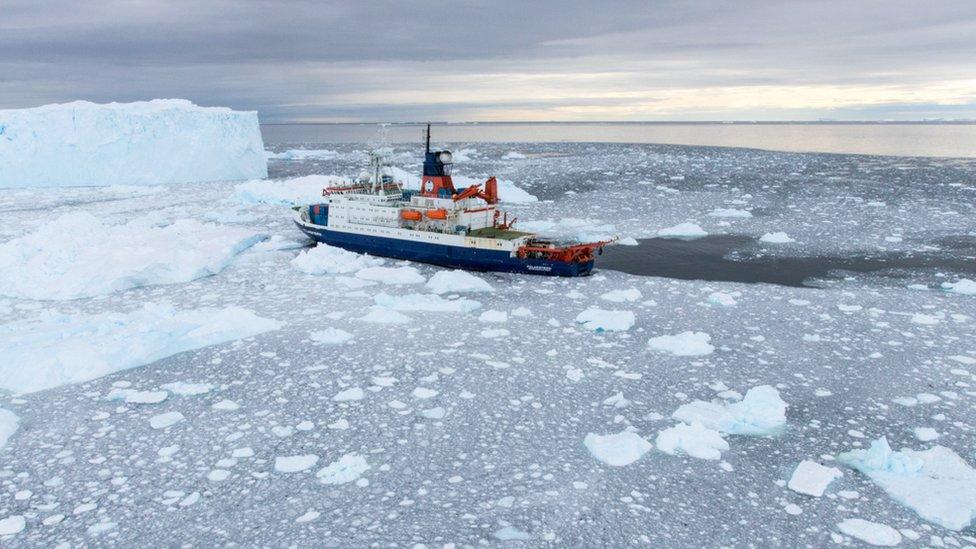
The RV Polarstern will leave Chile in the coming days bound for the Antarctic
One ship has got close this year. The South African research vessel SA Agulhas II anchored next to the shelf to do its science investigations just north of the Bawden Ice Rise, a shallow section of sea-floor that helps pin the platform in place. But if the Polarstern wants to reach the actual point of A-68's calving, it will have to travel further south still.
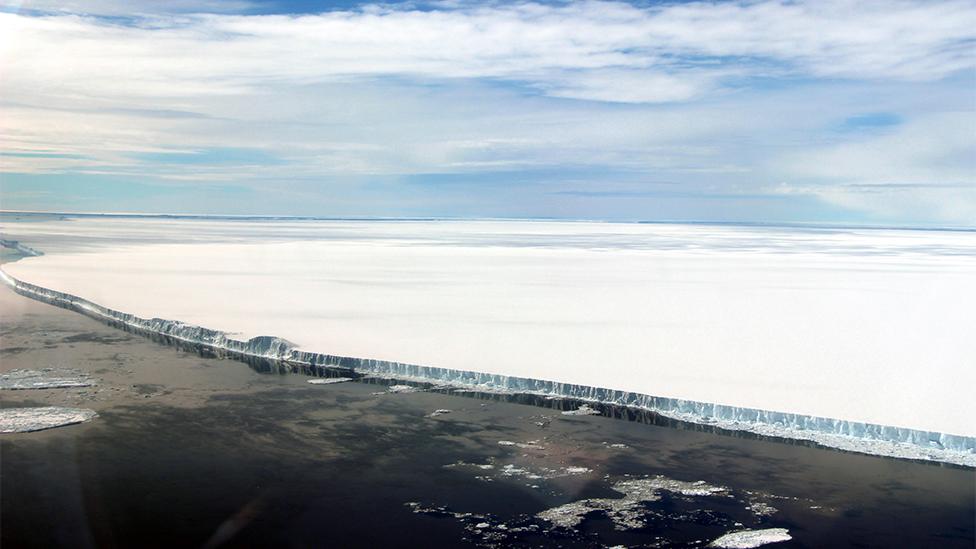
A-68's move northwards will allow species from the wider Weddell Sea to invade the ocean floor
Jonathan.Amos-INTERNET@bbc.co.uk, external and follow me on Twitter: @BBCAmos, external
- Published27 January 2019

- Published9 November 2018
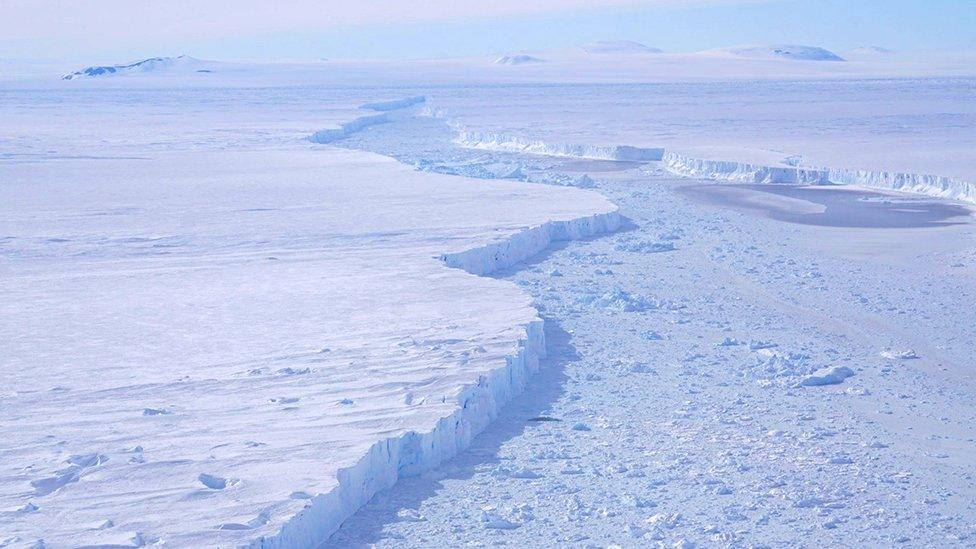
- Published9 July 2018
- Published2 March 2018
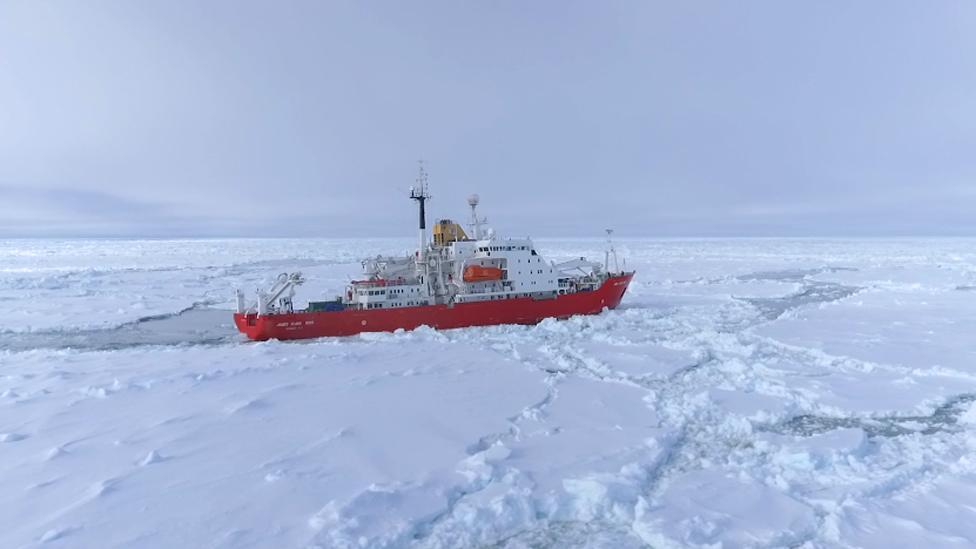
- Published12 July 2017
